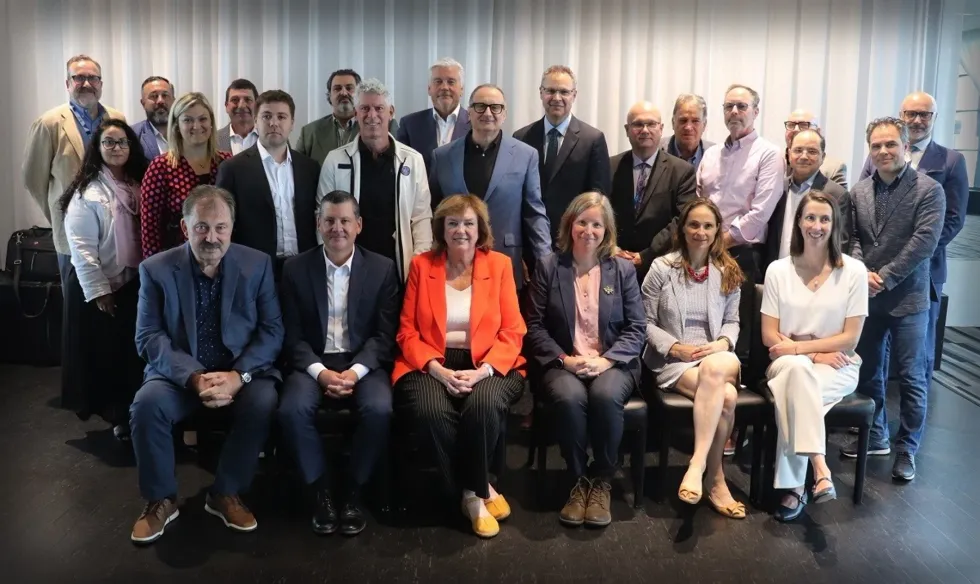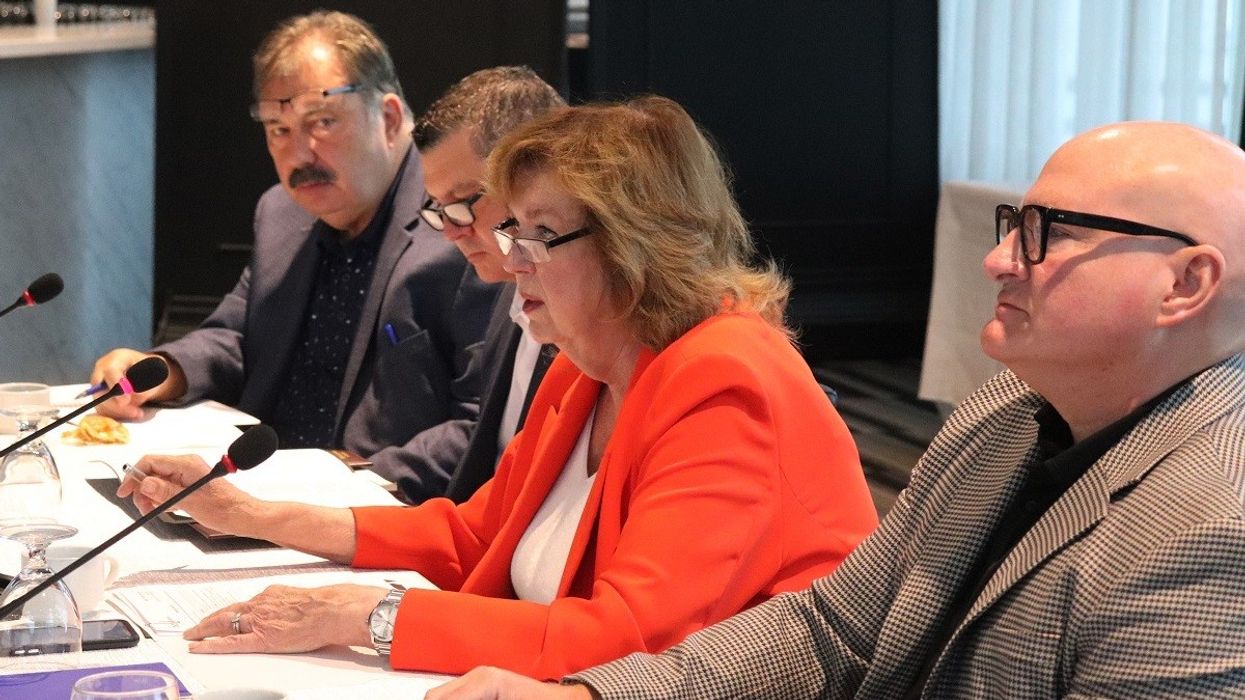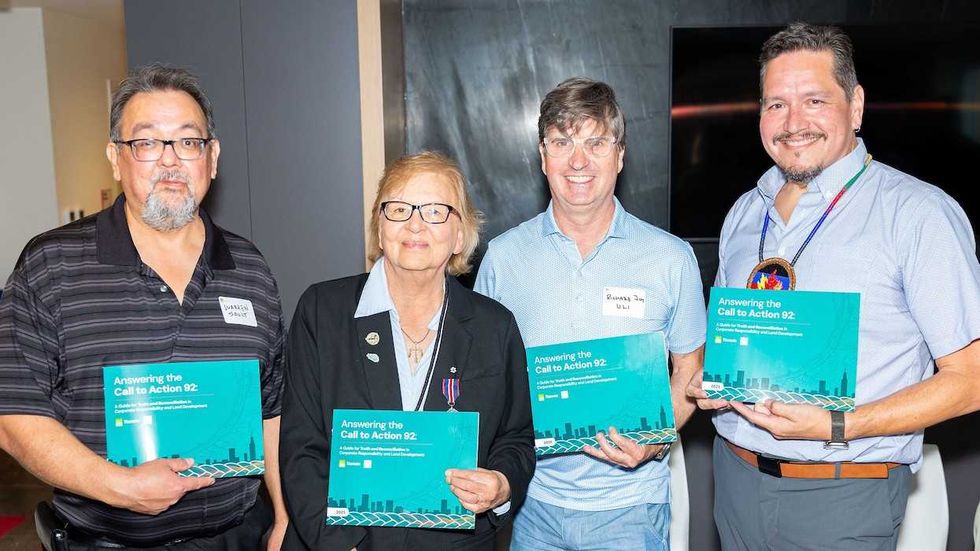You don't have to be a fan of Mississauga Mayor Carolyn Parrish, or a supporter of her politics, to see that she’s doing something right by giving development sector stakeholders a seat at the table during a housing crisis. Through her Mayor’s Housing Task Force, assembled last year, Parrish and her senior staff have worked closely with more than 30 private and not-for-profit sector experts from across Ontario to identify the challenges confronting them today, and how to best break down barriers to building.
Last month, we saw the product of that collaboration with the release of the Partners in Homebuilding report, which was applauded by sector stakeholders and lays out what municipalities, provinces, and federal government can be doing to rectify the housing crisis, as well as what the City of Mississauga is already doing, including updating its Official Plan to permit an additional 124,000 housing units for a total capacity of 370,000 new units city-wide.
On the heels of that report, Mississauga City Council passed the first “Mayor’s Housing Task Force Motion” (just last week) to reduce development charges by 50% for all residential projects, and by 100% on all three-bedroom purpose-built rental units until November 2026. Among other aspects, the motion also expresses that the Mayor will implore the federal government to provide the remaining three instalments of agreed-upon Housing Accelerator Fund funding in advance to help “offset the financial impacts” from the DC incentives.
When asked about their motivations for getting involved in the task force, members expressed to STOREYS that it was a bit of a no brainer. After all, many members lead companies with past or active projects in the city, giving them a vested interest in improving the development status quo.
For instance, Joseph Feldman is Executive Vice President and Chief Operating Officer at Camrost Felcorp, the company behind the the Exchange District Condos, which is a multi-phase master plan coming to Mississauga's downtown core. And Gavin Bailey, Director of Development Planning at Tridel, is leading the planning approvals process for Phase one of the company’s Harbourwalk project in Lakeview Village. Similarly, Robert Blazevski, who is President and Chief Operating Officer at DiamondCorp, points out that his company is one of the JV partners on the Brightwater master plan underway in Port Credit.
Blazevski says he “immediately accepted” when the opportunity arose to join the task force last year, as being involved in Brightwater has given him a front-row seat to the “challenges the city faces” when it comes to developing new housing, and where it stands to improve.

Not every member on the task force is a developer, per se — like Paula Tenuta, who is Senior Vice President, Policy and Advocacy at the Building Industry and Land Development Association (BILD). She got involved in the task force because it’s an extension of the advocacy BILD is already known for.
“There have been many different types of housing affordability task forces, sometimes set up through CEO's offices, sometimes through the chief planners as roundtables. This, I feel, is different,” Tenuta says. “What has struck me as the most interesting is the fact that this is led by the Mayor. [...] I’ve never been part of a group that has been so well organized, that has started with leadership and vision from the top, meaning the Mayor's office, with unanimous support from Council, to get the work done.”
Going into the first task force meeting in July, Tenuta says she was encouraged by the fact that the Mayor wasted no time in getting members’ input on where they’d like to see changes made. “I think that was key — she really wanted to to hear from the industry about what was happening on the ground, what were the real challenges for their projects that weren't financially viable,” she says.
While there was plenty of room to air grievances about DCs and the exorbitant “cost to build,” Tenuta says it was the fact that no stone was left unturned, even if that ‘stone’ was an inefficiency embedded in the city’s own planning processes, that stood out to her, and to other members of the group as well.
“One of the processes that I focused on and brought to the table was revamping the site plan approval process — like, how can we do things better? Because we go through, you know, five, six iterations of a site plan resubmission process, and that can take a year and a half to go through. And it's not needed,” says Bailey.
In response to grievances like Bailey’s, Parrish worked with members to design a ‘three strikes and you’re in’ model. “So you have three rounds of site plan approval, and if you still haven't resolved the issues by three rounds, then you schedule a meeting, you redline the plans, and you come to an agreement,” Bailey explains. “Now we've cut down the process by three quarters of the time, and that, to me, is a massive win for both the municipality and the industry because we're not wasting time arguing about a setback or whatever the case might be.”
“It’s three strikes and you’re in, as opposed to three strikes and you’re out. It’s a culture of getting to a yes,” Tenuta adds.
What an amazing day. Housing Task force was supported fully by my wonderful Council colleagues. Dramatic changes to our way of doing business: 50% reduction in Development Charges, 35% tax reduction/35 years on purpose built rentals and much more. Let the building begin! pic.twitter.com/YZL8maQFQS
— Mayor Carolyn Parrish (@carolynhparrish) January 29, 2025
Of course, not every grievance aired at these meetings was something that the City could realistically address. Michael Williams, Managing Partner and Head of Development at Hazelview Investments, points out that “the availability of trades” was spoken about, and while valid, “it’s more of a labour discussion” that falls under the jurisdictions of upper levels of government. That being said, Williams credits Parrish for focussing the group’s time and attention on items that were actionable. “I think the intent of the group was to give ideas that could actually facilitate execution versus more conversation,” he says.
“And I think last week's motion wasn't just about passing a motion, lowering DCs, and moving off of it. Her approach, at least as I understood it, is [that] things change, we may need to readdress them and figure out different solutions, we may need to remove some of the ideas and add new ones,” Williams adds. “What I've seen in the past is you create change, and then you leave it. You lower DCs, and you leave it. She seems fairly committed to monitoring to see if this actually achieves the objective of affordability and supplying homes.”
While Feldman feels that the January 29th motion is the task force’s most palpable piece of work to date, he underscores that there’s plenty of work — and groundwork — that’s been “flying under the radar.” The task force met for the first time in July, and two more times since, and over that time, Feldman says he’s perceived a change in tone. “Everyone is just more engaged,” he adds, “and I think we’re going to get better buildings built because there’s more of a collaborative attitude already.”
The task force will be meeting less frequently this year, but Feldman stresses that “there’s still work to do.” The next step, he says, is to get the Region of Peel to adopt a matching suite of development charge incentives now approved for Mississauga. He shares that deputations and discussions on this will be held next week.
“And further to that, there is a desire for more purpose-built rentals to break ground — and not only purpose built as just a tenure, but more sustainable, affordable, and accessible purpose built rental,” Feldman says. “So there have been discussions to figure out how that can be encouraged above and beyond the incentives already being announced.”
For his part, Bailey says he hopes to see more “heavy lifting” from the industry moving forward. “The municipality has now set the table — there’s the DC reductions, there's the expedited approvals, and other sorts of positive aspects and recommendations — so I think now is the time for the industry to step up and say, ‘Okay, let's move forward with our applications,’” he says. “And I also think that it’ll be interesting to see the applications that are currently in play, whether those approvals are expedited, as per the recommendations of the task force.”





















